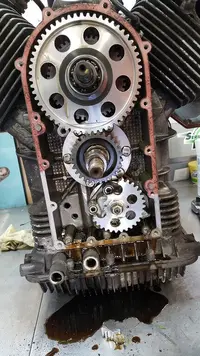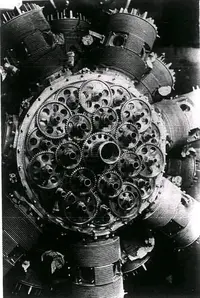V-10 Centauro aluminum & steel timing gears which have collided (kissed) and the aluminum gear exploded instantly.

However...look!
Here is an archive photo of the valve-timing gears from the Bristol Hercules radial engine. This was a 14-cylinder two-row radial sleeve aero engine produced by the Bristol Engine Company starting in 1939. It powered the Bristol Beaufighter heavy fighter, and was commonly used on British bombers at the time.
This engine was designed on drawing boards, using manual drawing instruments and 2D orthogonal projections. No 3D solids, no CAD simulations to check for geometric interference.

I cannot even begin to imagine the timing setups on this beast of an engine! Wow!!!

However...look!
Here is an archive photo of the valve-timing gears from the Bristol Hercules radial engine. This was a 14-cylinder two-row radial sleeve aero engine produced by the Bristol Engine Company starting in 1939. It powered the Bristol Beaufighter heavy fighter, and was commonly used on British bombers at the time.
This engine was designed on drawing boards, using manual drawing instruments and 2D orthogonal projections. No 3D solids, no CAD simulations to check for geometric interference.

I cannot even begin to imagine the timing setups on this beast of an engine! Wow!!!
